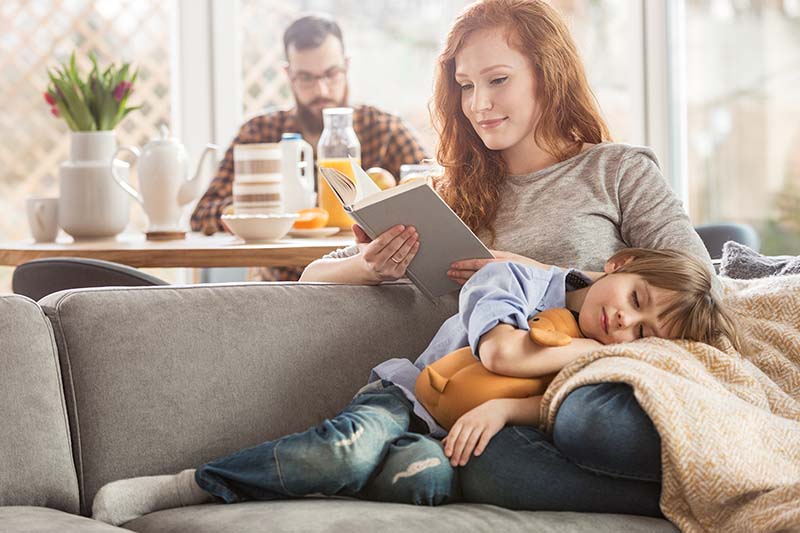Interesting Home Safety Facts to Protect Your Family
We’ve compiled some interesting home safety facts, along with tips to keep your family happy and healthy.

When you get behind the wheel of a car, you probably put a seatbelt on yourself and ensure that all others in the cabin have theirs on as well. If you ride a bike or scooter, you should wear a helmet to protect your head in case of a fall. Safety measures are designed to keep us—well—safe. However, many parents fail to recognize the safety hazards present in their own homes. We’ve compiled some interesting home safety facts, along with tips to keep your family happy and healthy.
Fact: More than a quarter of reported fires happen in homes
A housefire is one of the most devastating things that can happen to a family. But nearly 1,000 fires occur in homes every day in the United States, resulting in nearly $22 billion in property damage in 2020 alone. You can take these steps to reduce the risk of a fire breaking out in your home:
- Only use candles when you’re in the room in which they’re burning and extinguish them before leaving the room.
- Clean out the lint trap in your dryer before every load.
- Check the stove and oven when you finish cooking to ensure that they’re off.
- Avoid placing anything on a stovetop or in an oven that you don’t intend to cook.
- Install smoke alarms throughout your home and test them regularly
It’s also smart to store important and irreplaceable possessions in a fire-resistant box or safe. By taking these preventive steps in your home, you may be able to avoid the devastating consequences of a housefire.
Related: 8 Unexpected Items to Pack in Your Emergency Kit
Fact: Over 1/3 of burglars come in through the front door
According to Millenium Fire & Security Inc., a nationwide security company, a staggering 34% of burglars use a home’s primary entry point, the front door, to gain access. Leaving your front door unlocked or open might appear to thieves like an invitation to enter your home and take your stuff. Keep doors closed and locked at all times to protect your family. Double-check all exterior doors before heading to bed for the night to ensure that the house is locked up tight.
Fact: Accidental carbon monoxide poisoning takes over 400 lives per year
About 430 people in the U.S. die each year as the result of accidental carbon monoxide poisoning. Carbon monoxide is produced by the incomplete burning of carbon-based fuels. Improperly maintained or assembled appliances like hot water heaters, furnaces, and gas-powered generators are frequent culprits in residential carbon monoxide poisonings. As carbon monoxide is colorless and odorless, it is nearly impossible to detect without proper equipment, and in high concentrations it is extremely toxic.
So, make sure you have carbon monoxide detectors placed throughout your home to warn you when the gas might be present. Some smoke detectors can also detect for the presence of carbon monoxide. You can also turn off certain fuel-burning appliances when they’re not in use, such as your gas grill. When using gas-powered tools, such as space heaters, pressure washers, or generators, make sure you’re in well-ventilated areas. Always make sure to use licensed professionals when repairing or installing fuel-burning appliances in your home and have them inspected regularly.
By following these tips, you can reduce the risk of carbon monoxide poisoning in your home.
Fact: Drowning is a silent killer, especially of children ages one to four
Water safety is an absolute must in any home, but it’s especially vital in those that have swimming pools or hot tubs. Approximately three children die every day in the U.S. due to drowning. Unintentional drowning is the main cause of death among children between the ages of one and four.
What’s especially terrifying about drowning is that it’s silent. If a child falls in the pool or goes face down in a tub, they can’t scream or make noise. Small children may not have the ability to splash or thrash in an attempt to get air. It’s critical to watch your kids whenever they’re in or around water, including in the bathtub. If you’re swimming, don’t leave the pool area. Taking survival-focused swimming lessons can also help children learn what to do if they fall into the water by accident.
Although these facts can be alarming, it’s important to assess risk rationally and to take sensible precautions. If you are concerned about improving the safety of your home, visit safehome.org for helpful articles and ratings of common home safety products.






